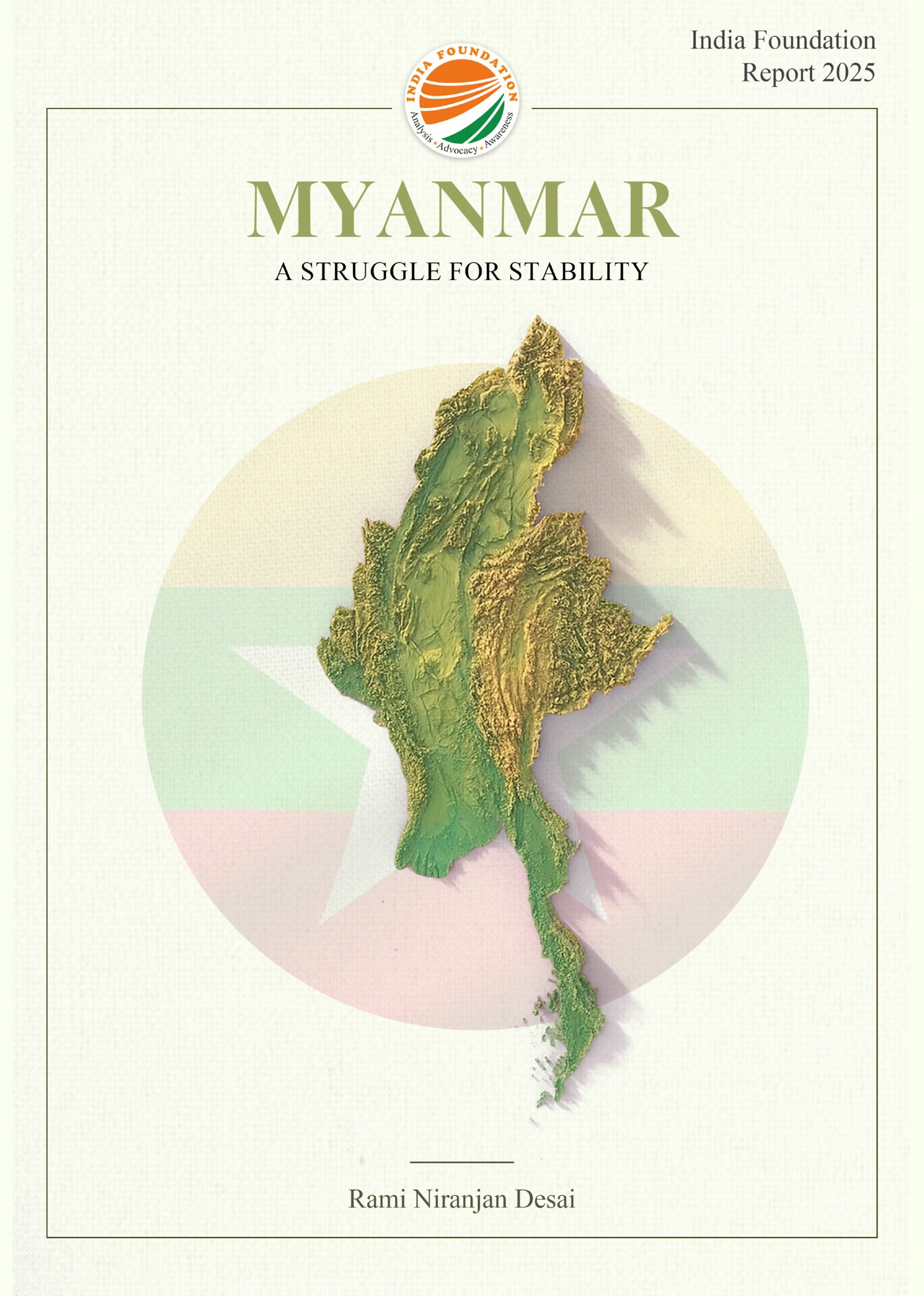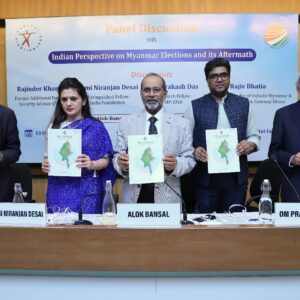A national social issue that India has grappled with in the past and with which she is struggling with in present times as well, is malnutrition in women, particularly rural women. What is important to note is that even with economic growth and decline in poverty and hunger, the decline in malnutrition in women has been extremely slow; malnutrition in the form of iron deficiency anaemia has in fact increased in certain regions[1].
Policy solutions directed at the problem of nutrition have failed due to the inability to link social situations with biological needs for nutrition. Two separate models have been at work; one that seeks to empower women through education and awareness and another that caters to women’s urgent nutritional requirements but overlooks the social and cultural context. It thus becomes vital to have both models working in harmony to provide a grassroots level self-sustaining solution to the problem of women’s malnutrition. It needs to be understood that food insecurity in women has its basis in the social space taken up by women and their position in the family household. An analysis of a typical rural household can provide great insights.
The social situations presented in the article below are based on the observations made by Rajni Palriwala in a village in Sikar district of Northwest India[2].
The family and household structures of patrilineality have been accessed as the framework around which malnutrition in women and their food insecurity has operated. When we consider a typical rural household, it is observed that it is headed by the senior-most male in the family. He is the head, for it is to him that the income pool of the family is submitted to and he is the one who approves all social and political actions of the family. The head is responsible for creating a division of labour and distribution of consumption (of food) by all family members.
As per the observations made in the study by Rajni Palriwala, under the division of labour, women were tasked with managing and cooking the grain brought to the house by the men. But even as managers of grain, women could not deny “men” access to it. They would also face the brunt if food was not made available to the men or if it was not properly cooked. It was often observed in various households that men would take the grain to the market and sell it to buy alcohol or fund their pleasure trips leaving the women in a much more difficult position to provide food on the table. Presence of a money economy also made things worse for the women; they were now more dependent on the men for their wages/salaries and had no control over their earnings[3].
In such situations and in situations of deficit which were frequent with seasonal changes in a rain-dependent farming structure in several rural communities, women compensated for the deficit by cutting down their own food intake. As managers of grain they were responsible to make available a daily quota for the family depending on what was available and the only source of manipulation they could exercise was to reduce their own consumption. Inability to make food available would be deemed as the women’s fault, the blame being placed on her rationing skills and excessive expenditure on female frivolities. The only option left with a woman would then be to either barter, borrow from neighbours or make cuts from her own consumption.
In rural families of Sikar district in Northwest India taken into observation in the study by Rajni Palriwala, it was observed that gender discrimination also manifested itself in forms of desire for a male child over a female one. Special nutrition was provided to the mother of a male child in comparison to the mother of a female child. Male infants were provided greater access to nutrition and healthcare facilities.
A cycle of malnutrition has been observed in the lives of rural women, a nexus of different factors playing a role. The cycle begins from malnourished girl infants, who grow up to be malnourished girl adolescents. They marry early pertaining to the societal setting, get pregnant at an early age with an ill fit body, often during adolescence and thereafter give birth to malnourished children[4]. Social structures of marriage have contributed to such a vicious cycle. The prevalence of child marriage and marriage during adolescence implies a young newlywed bride being integrated into the household, who as the youngest would be expected to fulfil many roles. As the youngest member and as a woman she would have no capacity or authority to negotiate her nutritional needs or make demands for her child’s (especially a girl) food or healthcare needs. Almost all responsibility of cooking and cleaning would fall upon her “young/energetic” body; unexpected guest visits would mean slogging in the kitchen for long hours making food for all and then choosing to rather sleep hungry than having to cook for herself again at the end. In everyday household, by eating after feeding everyone, lentils or vegetables would not remain for her and she would eat her bread with a pickle or a pepper paste.
It is thus observed that a woman’s food insecurity and malnutrition is linked to gender discrimination based on traditions and family structures.
Policy Recommendation
1. The first step to bringing solutions to women’s malnutrition in India is to bridge the gap between the models of empowerment policies and nutritional welfare schemes. They must exist in relation to each other, based on the bedrock of social and cultural contexts of the region under question.
2. In order to bring an end to the vicious cycle of malnutrition, it is important to prevent low birth weight. This can be achieved by promoting a healthy pre-pregnancy weight of the mother, older marriage age and a considerable delay after marriage for the 1st pregnancy.
3. These solutions can be brought in by bringing a change in the social fabric and understanding of marriage. The empowerment model would work in this case. Educated and socially aware women are likely to make better decisions about their maternal health and also have knowledge about delaying their first pregnancy and keeping a gap of a few years between children.
4. To bring such social changes, the community is what needs to be targeted. Women as a social group can be organised into self-help groups who will advocate their rights to healthcare and proper nutrition themselves and take collective measures to make conditions better for themselves.
5. It is important for young brides to achieve certain mental and physical maturity and delay the first pregnancy, this can be achieved by the normalisation of the use of contraceptives and addressing of taboos that operate in society about contraceptives. Communication between couples about family planning must also be promoted. Educating men about women’s reproductive and maternal health needs to be promoted.
6. Social practices such as dowry have further promoted men’s consumption over women and have primarily led to a deterioration in women’s standard of living. A requirement of dowry being given to the man for marriage has made women a liability to the natal home. Most often, the natal home is incapable of giving the dowry as demanded by the groom’s family. This deficit in dowry is then compensated by the bride working incessantly at her marital home. Her labour then becomes compensation for her deficit in dowry, which leads to a devaluation of her labour and alienates her from her right to consumption.Legal measures against dowry have been taken, but their implementation needs to be understood in the context of its impact on women’s consumption and health.
7. Health supplements and sanitary products being made available to women are often inaccessible to women due to restrictions on women moving out of the neighborhood without being accompanied by a man or due to non-availability or inaccessibility of transport services. Most of these women are responsible for procuring food from PDS (Public Distribution System) setups and are also readily accompanied by men. Nutritional supplements (iron or calcium tablets) or sanitary products can be made available with the PDS goods to women who hold a ration card. Such a step would be a better implementation of the nutritional welfare schemes in place.
8. Logistical measures can also be taken to help women from being overworked. Establishment of water pipelines to every home so that women do not have to travel long distances and exhaust themselves, LPG based stoves to be made available to women so they can quit their reliance on burning firewood for cooking which not only harms their lungs but also overworks women who go out to collect firewood. Bicycles can also be made available to women in every household to help them commute to nearby health clinics or markets.
9. Women’s political participation, especially at the rural grassroots level in gram panchayats or Zila Parishad, must be promoted, to bring them into positions of decision making, not only for themselves but also for many other women who continue to face problems hidden in the very fabric of the society they live in.
[1]Rajni Palriwala, Economics and Patriliny: Consumption and Authority within the Household
[2]Kavita Sethuraman and Nata Duvvury The Nexus of Gender Discrimination with Malnutrition: An Introduction
[3]Sunny Jose and K. Navaneetham, A Factsheet on Women’s Malnutrition in India.
[4]The National Family Health Survey 3 and 4.
References
1. Rajni Palriwala, Economics and Patriliny: Consumption and Authority within the Household
2. Kavita Sethuraman and Nata Duvvury The Nexus of Gender Discrimination with Malnutrition: An Introduction
3. Sunny Jose and K. Navaneetham, A Factsheet on Women’s Malnutrition in India.
4. The National Family Health Survey 3 and 4.
*The author is an intern at India Foundation



